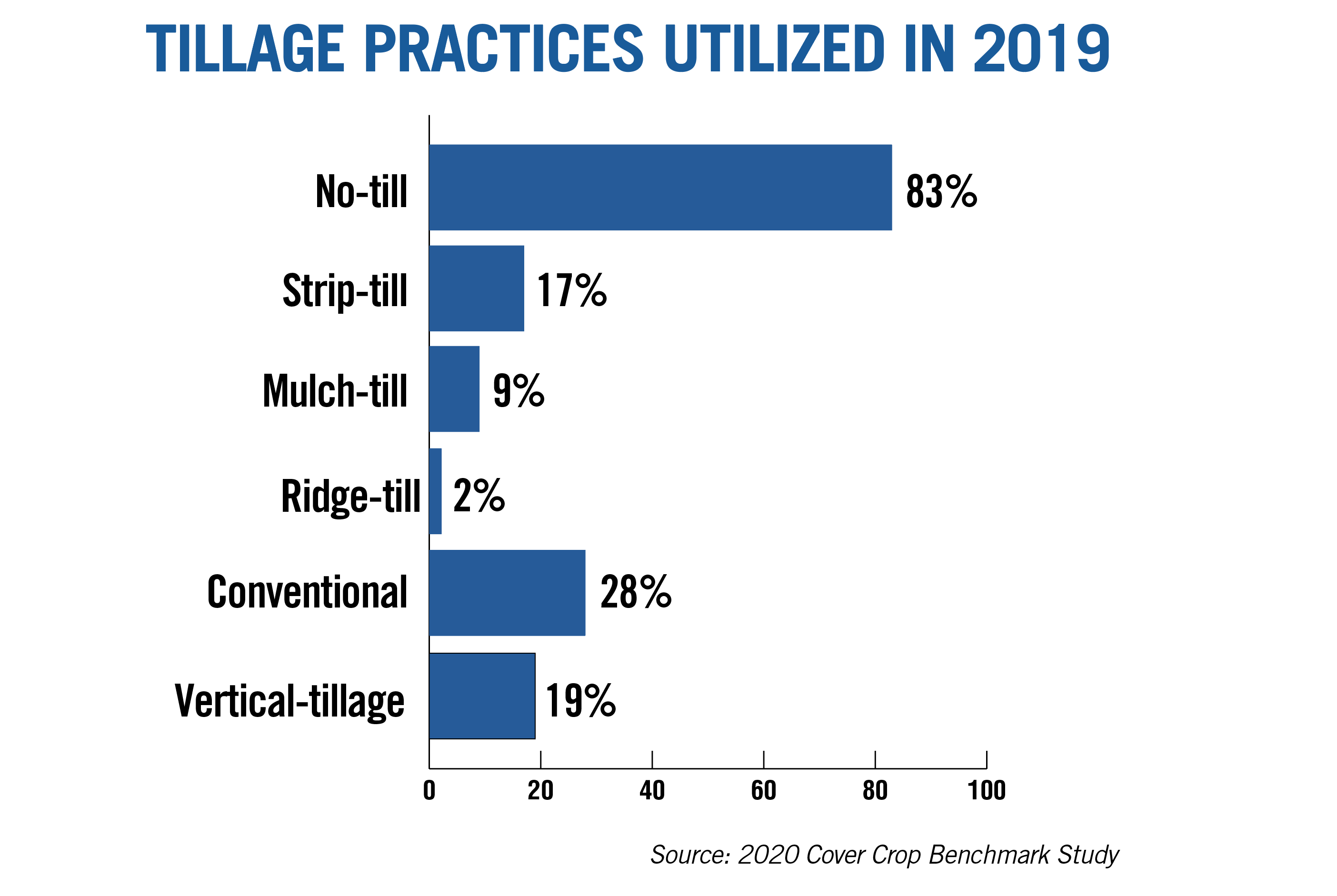When I was a kid, I loved reading choose-your-own-adventure books. You never knew where you were going to end up or how things would turn out. Farming is a lot like a choose-your-own-adventure story. Producers have to choose the right crop species, tillage practices, cover crop species and other inputs to result in a successful growing season.
The results of the first-ever Cover Crop Benchmark Study showed that growers are effectively using all types of tillage in conjunction with cover crops.
 The industry-exclusive survey from Cover Crop Strategies found the majority of growers use no-till practices (83%), but 28% who responded use conventional tillage on at least part of their farm. Vertical tillage is used by 19% of growers, while 17% use strip-till. Mulch-till and ridge-till came in with the lowest numbers of growers, at 9% and 2%, respectively.
The industry-exclusive survey from Cover Crop Strategies found the majority of growers use no-till practices (83%), but 28% who responded use conventional tillage on at least part of their farm. Vertical tillage is used by 19% of growers, while 17% use strip-till. Mulch-till and ridge-till came in with the lowest numbers of growers, at 9% and 2%, respectively.
 This tells us growers have to find the right combination that works for their operation. All factors have to be considered, such as soil type, location, labor availability and topography.
This tells us growers have to find the right combination that works for their operation. All factors have to be considered, such as soil type, location, labor availability and topography.
No matter what type of tillage is being used, growers can still capitalize on the soil health benefits that can be gained by using cover crops. Soil erosion can be prevented, water infiltration can be increased, weeds can be suppressed, and pest cycles broken — all by incorporating cover crops and managing them properly.
Jason Federer, an Indiana grower whose father started using covers on their family farm, can testify to the improvements in soil health due to utilizing cover crops, even though he uses some tillage on his farm.
“We have more problems with too much water than not enough, and over the years, I’ve watched infiltration improve behind our cover crops,” Federer says. “It’s hard to quantify, but I’m convinced the practice is helping overall soil health, just from the abundant population of earthworms we find. Also, when you pick up a handful of soil, it just smells ‘healthy’ and is very friable. I also see steady improvement in runoff reduction after big rains.”
Cover crops aren’t just a tool for mainstream crop growers. The Cover Crop Benchmark Study found growers who raise cotton (99), pulse crops (146), fruits and vegetables (193), hemp (91), nuts (81), and even vineyard owners (79) have put cover crops to work and seen positive outcomes.
A 2019 study by the University of Arkansas explored how using cover crops could help watermelon growers improve yields while improving the soil and reducing pest pressure. Using legumes as a cover crop increased the nitrogen available in the soil, while acting as hosts for pollinators to benefit the watermelon crop.
Check back for more coverage of the Cover Crop Strategies first-ever Cover Crop Benchmark Study.






